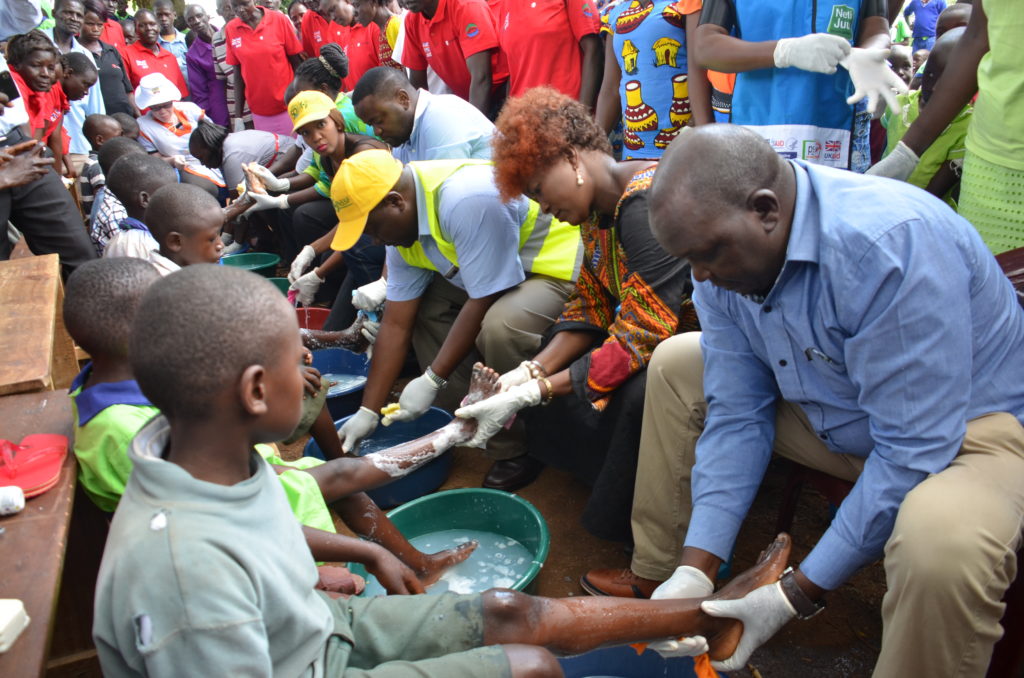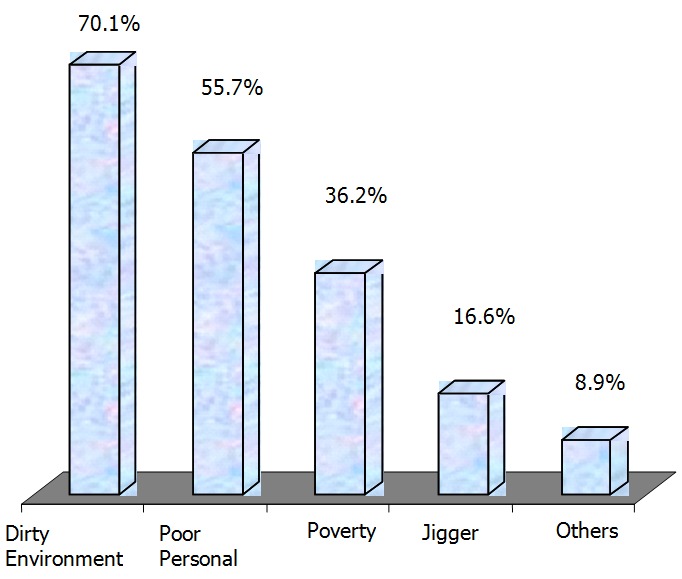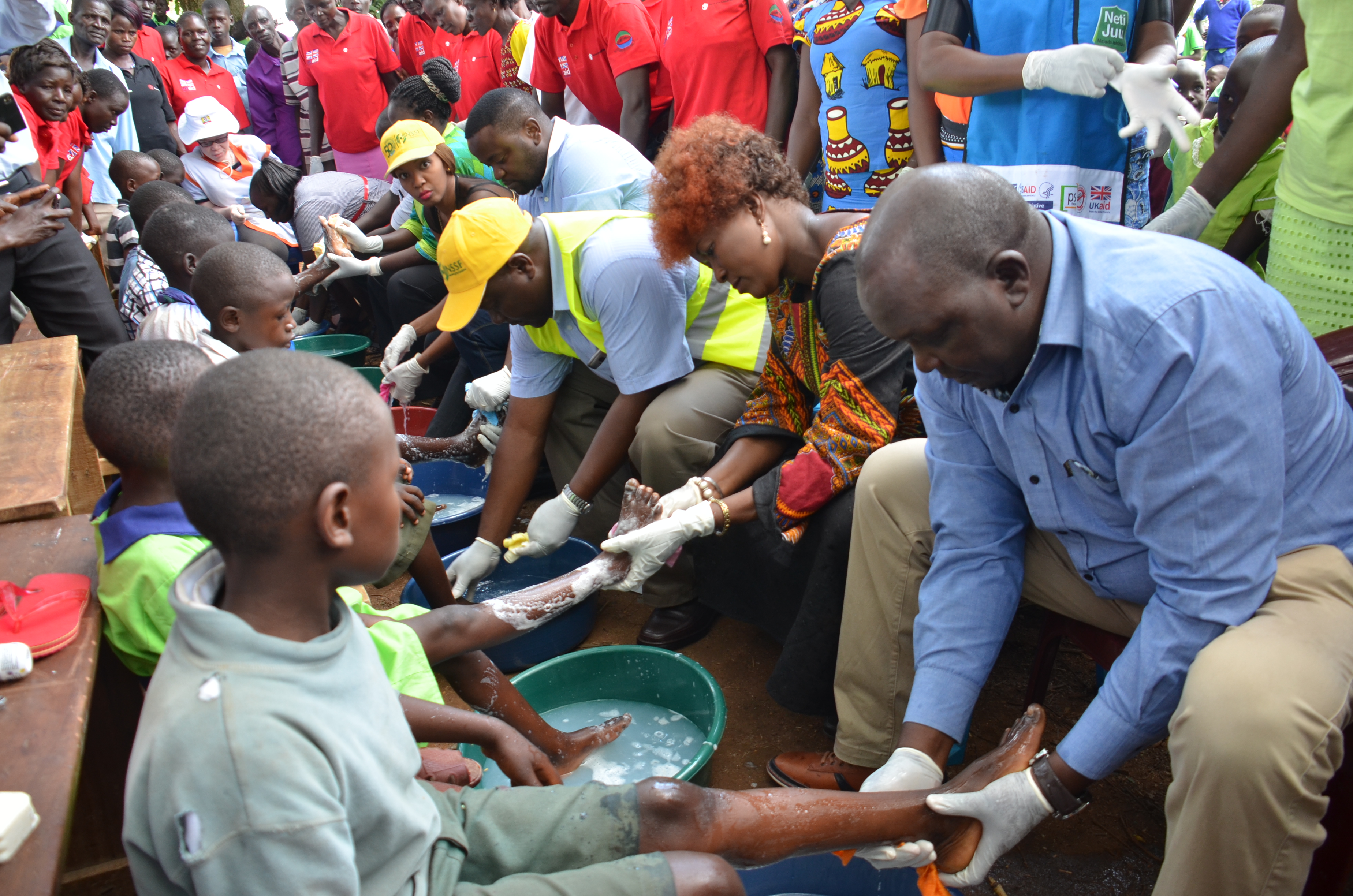By Okong’o Oduya

Poverty has been sited as one of the major contributors to jigger infestation Tungiasis in Busia County while putting Kenya Medical Research Institute (KEMRI) on task to do more research to find major cause of jigger infestation besides untidy environment .
This was noted by different stake holders in health sector in Busia County who had come to gether to help fight the menace.
Speaking at Akitesi market in Teso South Busia County, Ahadi Kenya Trust CEO Dr. Stanley Kamau, said there is need for everyone in the community to come out and eradicating the problem in the area and the county at large.
Mr. Kamau attributed the menace with the rising poverty adding that there is need to fight poverty in Kenya and in return jigger problem will also be a thing of the past. He said that his foundation will support parents with children affected with jiggers and affected families financially to empower them as a way of addressing the problem once and for all.
“I am starting a kitty for parents and families affected with jiggers to access money to develop themselves as a way of fighting the problem. Jigger cases are mostly reported in homes and families that are not well off financially and a way of solving this is to make every person financially independent through farming and other small business. This is a diseases caused by poverty. It is working other areas and I believe it will work here as well,” he said.
According to him fight against the problem has to take different approaches adding that there is need to control and prevent it instead of spending millions of money treating it. He urged KEMRI to do research and find the major cause of jiggers beside untidy environment and the cure.
On the other side KEMRI Alupe through the chairperson Dr. Lilian Apadet said they will carry out more scientific research on the jigger menace in the county to ascertain why it had remained resistant even after hygiene efforts have been achieved. She said they will use part of 224 million ksh set aside for general research to unearth the mystery behind Jigger problem in the County.
“This research will take upto six months. It will help us establish whether the potassium permanganate used in treating jigger victims has any side effects to people using it,” she said.
It is a proposal that was supported by Stanley Kamau saying so far no scientific research had been done before on jigger menace in the country that results in jigger victim’s mental retardation.
The area member of parliament Ms. Mary Emaase urged families in her constituency to maintain cleanliness as a way of keeping the problem at bay. She further appealed to the County Government to enforce the supervision of all both public and private health institutions in the area and ensure they meet professional standards needed by the ministry of health.
“We will succeed in this war if we maintain high level of cleanliness in both our homes and environment.”She said.

When Kenyas’s First Lady, Margaret Kenyatta launched National Policy Guidelines on Prevention and Control of Jigger Infestation In Kenya last year , she noted that two million Kenyans in 24 counties were affected by the jigger manance adding that other 10 million were at risk of infestation.
She pointed out how the jigger problem was not only a socio -economic burden but also it added a huge burden to the entire economy of Kenya.
The World Health Organization (WHO) recognizes tungiasis or jigger infestation as a neglected disease of marginalized populations and has encouraged more significant research to be carried on the disease. This would allow new treatment regimes to be available for tungiasis in the future. However, given the current unsatisfactory situation where tungiasis treatment regimes are of low efficacy, “prevention is better than cure” rings true.
It has emerged that the vector and vermin control principle of cutting the lifecycle of the vector or vermin; particularly at the larval stage is the most effective jigger prevention, control, elimination intervention. This should form the major focus for both levels of government and partners working in prevention and control of jiggers in the country.
More on jiggers: https://issuu.com/awcfs/docs/reject_102/2?e=1731384/9981913















